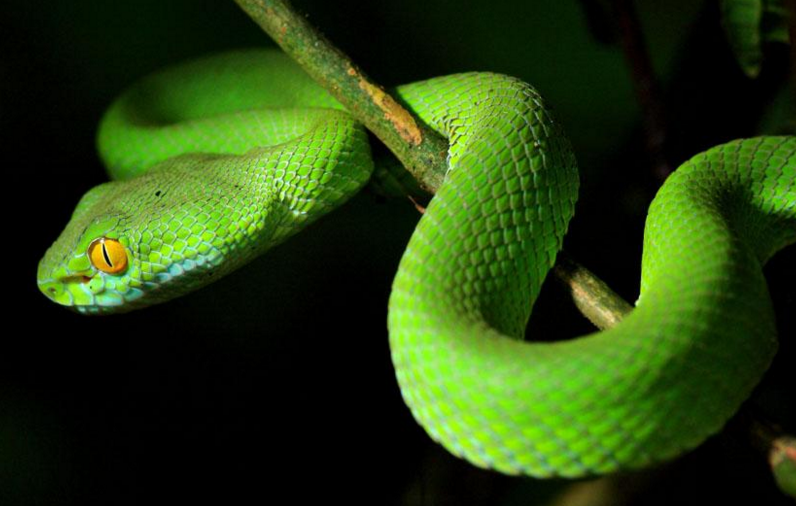(单词翻译:单击)
听力文本
The big-eyes are the equivalent of bats, night feeders that leave the cave each evening.
大眼鲷相当于蝙蝠,它们每天晚上出洞觅食。
And like all cave commuters, they are most vulnerable at the scheduled time of departure.
和所有洞穴动物一样,它们在出发阶段最容易遭受攻击。
A bottle-neck funnels these exiting bats into dense concentrations, attracting the attention of others.
当大群蝙蝠密集地通过瓶颈出口时,很容易引起其它动物的注意。
The bats can detect the snakes using echolocation,
蝙蝠能利用回声定位觉察到蛇
but the snakes are literally in the dark, they can see nothing.
而蛇则完全处于黑暗之中,它们看不见任何东西。

The strikes seem to be largely hit and miss.
这种攻击更像是在碰运气
But the snakes have a secret weapon.
不过蛇也有自己的秘密武器
They can actually sense each bat flying past.
它们实际上能感觉到每一只飞过的蝙蝠
Receptors in the snake's head pick up the heat given off by the flying bats, as this thermal image shows.
位于头部的“热眼”能觉察到飞行中的蝙蝠散发出的热量,正如这幅热影像所示。
To the snakes, the bats are apparently glowing and this gives them something to aim at.
每一只蝙蝠在蛇“眼”前都是活灵活现,这也给了它们瞄准目标的机会。
视频及简介
洞穴是不受阳光控制的生物栖息地之一,但这并不意味着那里就不存在野生生物。本集节目将深入洞穴内神秘而永恒的黑暗,探索山洞、洞穴和隧洞中未知的地下世界。


